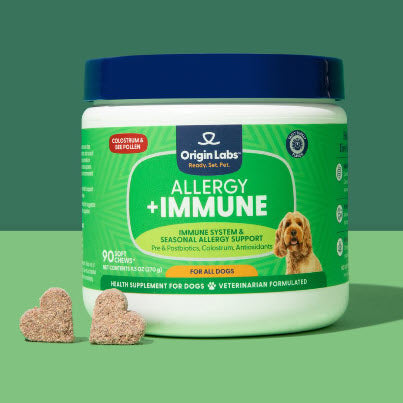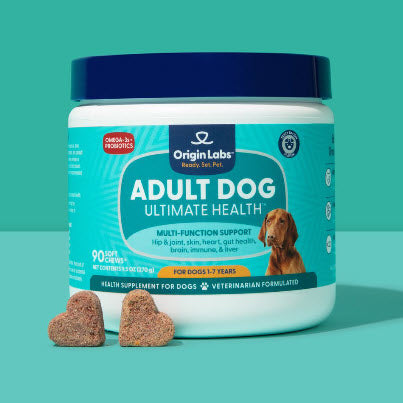Introduction
Can dogs have paprika? This question often arises among pet owners who strive to provide a healthy and balanced diet for their furry companions. A dog’s nutrition is crucial to their overall health, affecting everything from their coat's appearance to their energy levels and lifespan. Feeding your dog the right foods can prevent many health problems and improve their well-being.
Why a Healthy Diet is Important for Dogs
A balanced diet ensures that dogs get the necessary nutrients. Proteins, fats, carbohydrates, vitamins, and minerals all play important roles in maintaining bodily functions and promoting good health. While high-quality dog foods are formulated to meet these nutritional requirements, some pet owners wonder if adding human foods can be beneficial.
Clearing Up Misconceptions About Feeding Human Foods to Dogs
Many people assume that what's healthy for humans must also be good for dogs. However, this isn't always true. Some human foods can be harmful or toxic to dogs, leading to digestive problems or even serious health issues. While bell peppers are generally safe for dogs in small amounts, not all spices and seasonings are.
For instance, paprika, a common spice in human cooking, should be avoided as it can be harmful to dogs. Instead of seasoning your dog's food with potentially dangerous spices, it's best to rely on specialized dog food or supplements that are specifically formulated to support their unique needs at different life stages.
Understanding Paprika and Its Potential Impact on Dogs' Health
Defining Paprika and Its Varieties
Paprika is a popular spice made from dried pods of the Capsicum annuum plant. It's used in cooking to add flavor and color to dishes. There are different types of paprika, including:
- Sweet Paprika: Mild and slightly sweet without much heat.
- Hot Paprika: Contains more capsaicin, giving it a spicier kick.
- Smoked Paprika: Adds a smoky flavor to foods due to the smoking process during drying.
Each type has its own unique taste and characteristics when used in recipes.
Exploring the Presence of Capsaicin in Paprika and How It Affects Dogs
Capsaicin, the compound that makes chili peppers spicy, is found in varying amounts in paprika. While humans may enjoy the heat, dogs react differently to capsaicin. It can cause several problems for dogs:
- Gastrointestinal Upset: Eating capsaicin can lead to stomach pain, vomiting, or diarrhea in dogs.
- Irritation: Capsaicin can irritate a dog’s mouth, throat, and digestive system if they come into contact with it.
- Increased Sensitivity: Dogs are generally more sensitive to capsaicin than humans.
Because of these potential issues, it's important to be cautious when introducing spicy foods like paprika into a dog's diet.
Examining the Difference Between Paprika and Bell Peppers in Terms of Their Suitability for Canine Consumption
Bell peppers are another type of pepper from the same Capsicum family as paprika. However, they are quite different from paprika when it comes to being safe for dogs to eat. Here are the main differences:
- Capsaicin Content: Bell peppers have very little to no capsaicin, which means they are not spicy and usually safe for dogs.
- Nutritional Benefits: Bell peppers are packed with vitamins A and C, antioxidants, and fiber. These nutrients can boost a dog’s immune system and overall health.
- Digestibility: Dogs tend to find bell peppers easier to digest compared to the spicier types of paprika.
Considering these distinctions, bell peppers can be a better choice if you want to add some variety to your dog’s meals without any potential harm. Their nutritional benefits make them a great addition to a dog's diet.
For those interested in ensuring their dog's health without risking adverse reactions from spices like paprika, exploring safe food options such as health supplements tailored for adult dogs is crucial. These supplements provide support for your dog as they grow older.
Is Paprika Safe for Dogs?
Feeding paprika to dogs can introduce several potential risks due to the compounds found in this spice. One of the primary concerns is the presence of capsaicin, a compound that gives paprika its heat. Capsaicin can be irritating to a dog's gastrointestinal tract, leading to digestive issues.
Some potential risks include:
- Gastrointestinal Irritation: Capsaicin can cause stomach upset, vomiting, and diarrhea. Dogs have more sensitive stomachs compared to humans, making them more susceptible to these adverse effects.
- Respiratory Issues: Inhalation of paprika powder can irritate a dog's respiratory system, potentially causing coughing, sneezing, or difficulty breathing.
- Allergic Reactions: Some dogs may exhibit allergic reactions to paprika, which could manifest as skin rashes, itching, or swelling.
- Long-term Health Impacts: Regular consumption of spicy foods like paprika might lead to chronic digestive problems or exacerbate existing conditions such as gastritis.
Signs and Symptoms of Paprika Poisoning in Dogs
Identifying symptoms early on is crucial for mitigating the impact of paprika poisoning. Here are some signs that your dog may have ingested paprika and is experiencing adverse effects:
- Vomiting and Diarrhea: These are the most common symptoms and indicate gastrointestinal distress.
- Excessive Drooling: An increase in saliva production can be a response to irritation in the digestive tract.
- Loss of Appetite: Dogs experiencing discomfort from ingesting paprika may refuse food.
- Abdominal Pain or Discomfort: Your dog might show signs of pain when their abdomen is touched or may assume a hunched posture.
- Coughing or Sneezing: This occurs if your dog has inhaled paprika powder, affecting their respiratory system.
- Lethargy: A decrease in energy levels might indicate your dog is unwell due to ingestion of an unsuitable substance.
If any of these symptoms are observed after your dog has consumed paprika, it's essential to consult with a veterinarian promptly. Early intervention can help prevent more severe health issues.
Considering Spicy Foods in Your Dog's Diet
Guidelines for Safely Incorporating Spicy Ingredients in Dog Meals
When it comes to adding spicy ingredients to your dog's meals, caution is key. Dogs have different tolerance levels for spices compared to humans. Here are some guidelines:
- Start Small: Introduce any new, spicy ingredient in very small amounts.
- Monitor Reactions: Watch for any adverse reactions such as gastrointestinal upset, vomiting, or diarrhea.
- Consult Your Vet: Before making any significant changes to your dog's diet, it's always a good idea to consult with your veterinarian.
Analyzing Different Types of Spicy Peppers and Their Potential Effects on Dogs' Well-being
Not all spicy foods are created equal. Some peppers can be more harmful than others:
- Chili Peppers: Contain capsaicin, which can cause severe irritation in dogs. Symptoms include drooling, vomiting, and abdominal pain.
- Aleppo Peppers: Milder than traditional chili peppers but still contain capsaicin. Even though they might seem less harmful, they can still cause discomfort.
- Paprika: As discussed earlier, paprika contains capsaicin and can cause digestive problems in dogs.
Understanding the Presence of Solanine in Certain Spicy Foods and Its Implications for Canines
Solanine is a natural toxin found in certain nightshade plants, including some types of peppers. This substance can pose risks to dogs if ingested in significant quantities:
- What Is Solanine? Solanine is found in plants like tomatoes and potatoes as well as some peppers.
- Effects on Dogs: Ingesting solanine can lead to symptoms such as lethargy, drooling, confusion, and gastrointestinal distress.
- Risk Management: Avoid feeding your dog parts of plants that contain high levels of solanine. If you suspect your dog has ingested solanine-rich food, contact your vet immediately.
Key Takeaways
Incorporating spicy foods into your dog's diet requires careful consideration. Always prioritize their health by starting small, monitoring their reactions, and consulting with a veterinarian before making any dietary changes. Different types of spicy peppers have varying effects on dogs' well-being. Understanding the presence of substances like solanine helps ensure you make informed choices about what is safe for your furry friend.
What to Do If Your Dog Accidentally Ingests Paprika
Immediate Steps to Take When Your Dog Eats Paprika
When you discover that your dog ate paprika, it's crucial to act promptly to minimize potential health issues. Here are some immediate steps to follow:
- Identify the Amount and Type: Determine how much paprika your dog has eaten and what type. Different varieties of paprika can have varying levels of capsaicin, which can be harmful in large quantities.
- Remove Access: Ensure your dog cannot access more paprika or any other potentially harmful substances.
- Monitor for Symptoms: Watch for signs of distress such as vomiting, diarrhea, excessive drooling, coughing, or difficulty breathing.
- Provide Water: Offer your dog plenty of fresh water to help flush out their system and soothe any irritation caused by the paprika.
Consulting Your Veterinarian for Further Assistance
If your dog exhibits symptoms or if you're unsure about the quantity ingested, contacting your veterinarian is essential. Here's why:
- Expert Guidance: A vet can provide professional advice tailored to your dog's specific situation, considering factors like size, breed, and overall health.
- Potential Treatments: Depending on the severity of symptoms, the vet might recommend treatments such as activated charcoal to absorb toxins or medications to alleviate gastrointestinal distress.
- Follow-Up Care: Monitoring and follow-up visits might be necessary to ensure that there are no lasting effects from the ingestion.
Immediate veterinary consultation is particularly important if your dog shows severe symptoms or if a large amount of paprika was consumed.
By taking these steps and consulting with a veterinarian, you can better manage the situation and safeguard your dog's health.
Safer Alternatives and Substitutes for Paprika in Your Dog's Meals
Finding safe food alternatives for dogs instead of paprika is essential for their health and well-being. While paprika adds a burst of flavor to human meals, it may not be the best choice for our canine companions.
Nutritious and Flavorful Options to Replace Paprika in Your Dog's Diet
To ensure your dog enjoys tasty meals without the risks associated with paprika, consider these nutritious substitutes:
- Sweet Potatoes: Rich in vitamins A and C, sweet potatoes can be baked, mashed, or added as chunks to your dog's food.
- Carrots: These are not only crunchy and delicious but also packed with beta-carotene and fiber.
- Pumpkin: Known for its digestive benefits, pumpkin adds a mild sweetness that many dogs find appealing.
Recommended Dog-Friendly Herbs and Spices for Enhanced Taste
Certain herbs and spices can safely enhance the flavor of your dog's meals:
- Parsley: Fresh parsley can help freshen breath and provide a source of vitamins A, C, and K.
- Basil: This herb is known for its anti-inflammatory properties and can be sprinkled on your dog's food for added flavor.
- Turmeric: With its anti-inflammatory benefits, turmeric can be a great addition in small amounts.
Example Recipe Substitution
If you're preparing homemade dog food or treats that call for paprika, try using these substitutes:
- Replace hot paprika with a small amount of turmeric or parsley to avoid any spicy kick that could upset your dog's stomach.
- Use sweet potatoes or carrots instead of sweet paprika to maintain a similar color and add nutritious value.
By incorporating these alternatives into your dog's diet, you ensure they enjoy flavorful meals without compromising their health.
Conclusion
Promoting long-term health in dogs requires a balanced approach to feeding. Ensuring that our furry companions receive a nutritious diet without potentially harmful ingredients like paprika is crucial.
Regular consultations with your veterinarian play a vital role in maintaining your dog's overall well-being. Having an expert's advice ensures that your dog's diet is appropriate for its specific health needs and life stage. Always consult your veterinarian before introducing new foods or supplements to your dog's diet.
To keep a close eye on your dog's health beyond nutrition, consider using tools such as the Fi Dog Collar. This advanced device helps track your dog's activity levels, location, and more, offering peace of mind and valuable data to share with your vet during check-ups.
Prioritizing a balanced diet, regular veterinary care, and utilizing innovative tools like the Fi Dog Collar ensures that our beloved pets lead healthy, happy lives.
FAQs (Frequently Asked Questions)
Can dogs have paprika?
No, it is not safe to feed paprika to dogs as it can be toxic to them and may lead to symptoms of poisoning.
What are the potential risks of feeding paprika to dogs?
Feeding paprika to dogs can result in paprika poisoning, which may cause symptoms such as vomiting, diarrhea, abdominal pain, and other gastrointestinal issues.
Are there safer alternatives and substitutes for paprika in my dog's meals?
Yes, there are various nutritious and flavorful options to replace paprika in your dog's diet. You can consider using dog-friendly herbs and spices for enhanced taste.
What should I do if my dog accidentally ingests paprika?
If your dog ingests paprika, take immediate steps such as contacting your veterinarian for further assistance. It is important to seek professional help in such situations.
Is it safe to incorporate spicy foods in my dog's diet?
It is important to be cautious when incorporating spicy ingredients in your dog's meals. Different types of spicy peppers may have varying effects on your dog's well-being, so it's essential to consider this carefully.
What is the significance of a healthy diet for dogs?
A healthy diet plays a crucial role in promoting overall canine wellness. It is important to ensure that your dog's meals are nutritious and balanced to support their long-term health.








